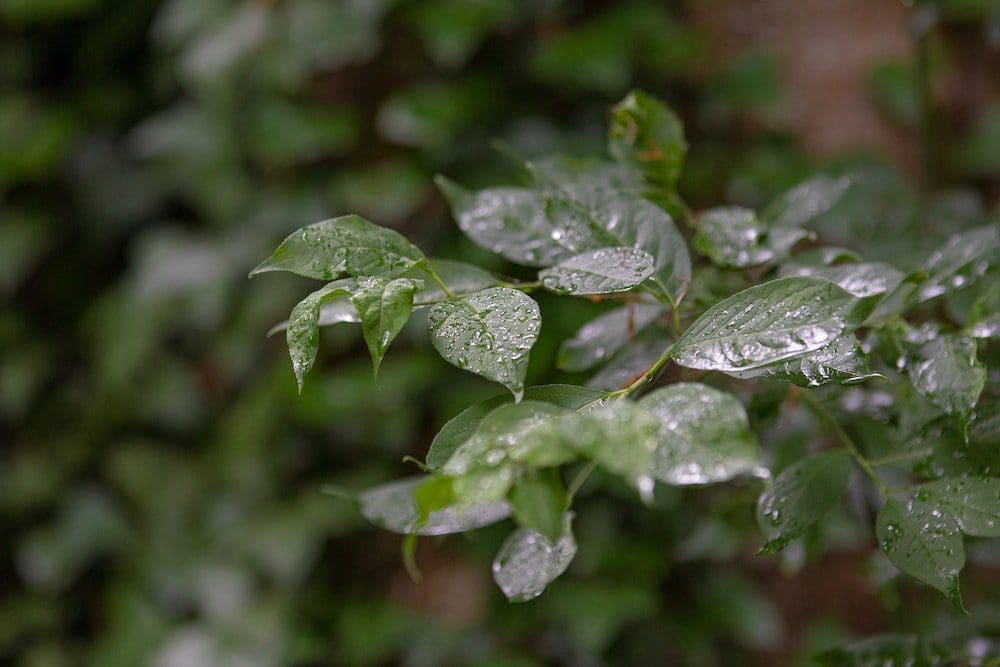June is here, and so is that classic St. Louis summer heat. With temperatures rising, you might be watering your trees and plants more than usual. And you certainly should – your plants are going to get thirsty in the heat! But we think it’s important to note that overwatering, like underwatering, can take a toll on plant life. It’s precisely during this time, when conscientious gardeners are concerned about their trees’ water levels, that overwatering most often occurs.
In this post, we’re going to tackle some common questions about tree watering and specifically over-watering. With that in mind, we’ll start with what is perhaps the most important question.
I. How to tell if you’re overwatering a tree
- The base of the tree is constantly wet
- New growth at base of tree withers before fully grown
- New growth at base of tree turns pale or yellow
- Leaves are fragile and break easily
Wetness at the base of your tree is the most obvious sign that you’re overwatering your tree. It’s pretty intuitive. But there are other signs, such as fragile leaves and stunted growth at the base, that are a little less obvious. In fact, these issues may also arise from underwatering!
But it’s important to note that while an overwatered tree will have fragile leaves, these leaves will still be green and otherwise healthy-looking. Lush but brittle leaves is another major indicator that your tree is being overwatered, as opposed to under-watered.
You should also check the soil below the surface. We recommend digging about 6 to 8 inches below the surface and feeling it in your hands. The soil should be cool and damp, but not sopping wet. If the deep soil near your tree is noticeably soggy, then you’re probably guilty of overwatering.
II. Why is overwatering bad for trees
Overwatering trees is bad because it makes it difficult for them to “breathe.” In fact, it’s common to refer to overwatering as “drowning” a plant. Saturating the soil with water fills the air pockets that would normally allow for oxygen uptake by the plant roots. Less available oxygen means less photosynthesis on the part of the tree, and thus less growth.
If roots are deprived of oxygen long enough, then fungal infection will set in and cause root decay. As a result, the roots will be unable to take up nutrients that are necessary for plant growth. They will become soft, slimy, and dark in coloration, as opposed to their normal firm, white appearance.
III. How often should I water my tree?
There are a number of factors to consider when deciding how often to water your tree. Trees with established root systems only need to be watered once a month. However, in the heat of summer, you may need to water more often. We recommend watering multiple times per month instead of increasing the volume that you apply monthly, as doing so may lead to tree “drowning.”
Newly planted trees are a bit different. Trees that have just been planted should be watered daily. From 3-12 weeks old, trees should be watered every 2-3 days, and once trees are 12 weeks old, they should be watered weekly until they have fully established root systems.
You should water mature trees enough to moisten the soil to a depth of about 10 inches. Make sure your tree has enough water by poking an 8” screwdriver into the soil. Dry soil is hard, so if you can’t push past about 6 inches, then your tree needs more water.
IV. The Takeaway? Be Attentive.
This advice goes for overwatering, as well as pretty much any facet of plant care: pay attention to your trees! They have ways of telling you what they need. Whether it’s less water, more water, or something entirely different, like more nutrients in the soil, your trees provide indicators about their health. The most attentive tree owners will look for these signs, respond to them, and end up with the healthiest trees on the block.
And, if your tree is telling you something, but you’re not sure what it is, visit our page on plant health care. Jackson Tree Service provides a number of preventive and therapeutic treatments to promote tree health.
For help with tree care, contact our team of arborists at Jackson Tree Service.

